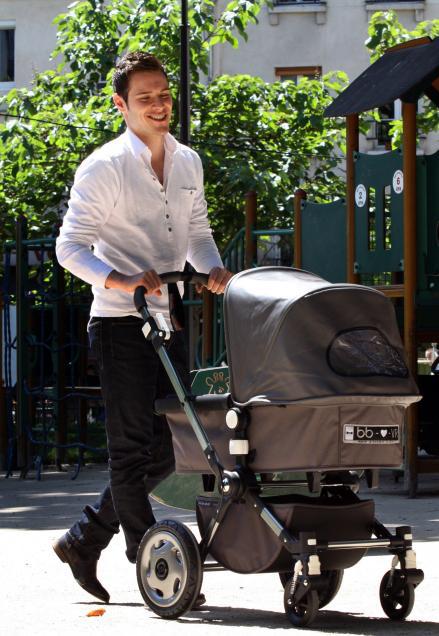As I wrote here last week, recent research suggests that family-friendly policies, which do a great job of keeping women in the workforce in some capacity, can also have the unintended consequence of shuffling women into the kinds of “mommy-track” jobs that don’t come with a corner office.
Parental leave is a particularly tough nut to crack: Too little leave, and women may quit, overwhelmed by the challenges of parenting a newborn and working full-time. But too much leave may lower women’s earnings in the long-term.
“If the family leave gets very long and very extended, then it may encourage women to stay out longer than they otherwise would have,” explained economist Francine Blau when I interviewed her for last week’s article. “And that can have negative effects on their wages and occupational advancement.”
Catherine Rampell, in a column about parental leave for next weekend’s New York Times Magazine, makes a strong case for destigmatizing paternity leave through the kind of “use-it-or-lose-it” policies that some European countries have been experimenting with.
While Sweden was the first country to introduce “daddy leave” in the form of a non-transferable month of paternity leave in 1995, tiny Iceland is actually at the forefront of this movement.
“[In 2000], Iceland basically said ‘Break the whole thing up, just give them equal, independent rights–because this shareable thing isn’t working,” explained economist Janet Gornick when I spoke to her last month. The country passed a law that granted three months of non-transferable parental leave to both mothers and fathers; an additional three months of leave was granted to the couple to share as they chose.
By most measures, the law was a rousing success. About 90 percent of Icelandic fathers take leave. In 2007 (the most recent year for which I’ve found data), fathers in Iceland took 101 days of parental leave—almost exactly 1/3 of the family’s total benefit days. A 2012 report on gender equality in the country found that the policy resulted in closer father/child relationships and more equality between men and women at work.
The law was such a success that Iceland recently went a few steps further with a 5-2-5 policy: Mothers and fathers will soon each be entitled to five months of non-transferable leave, with an additional two months of shared leave.
The reform is good news for gender equality in Iceland. Rampell offers up evidence that parental leave quotas have long-term effects on how men and women share household and childcare duties:
A striking new study by a Cornell graduate student, Ankita Patnaik, based on a new paid paternity-leave quota in Quebec, found that parents’ time use changed significantly. Several years after being exposed to the reform, fathers spent more time in child care and domestic work—particularly “time-inflexible” chores, like cooking, that cut into working hours—than fathers who weren’t exposed to the reform. More important, mothers spent considerably more time at work growing their careers and contributing more to the economy, all without any public mandates or shaming.
Rampell suggests that having dad at home early on may serve to “alter expectations and habits” in the long-term, a theory which makes perfect sense to me. I took four months off after the birth of my daughter before returning to work part-time; my husband took a week off. Even now, two years later, I still see the effects of those early months in ways large and small—it’s hard to argue that my husband should pack the diaper bag when I’m indisputably better at squeezing in that last bag of Cheerios, thanks to all those extra months of practice. Old habits—and entrenched social norms—die hard.
In fact, even idyllic Iceland, which ranked number 1 in The World Economic Forum’s 2012 Global Gender Gap Report, hasn’t figured out total equality. Icelandic women are underrepresented in management positions, and a gender wage gap persists in the country. Perhaps this is because, while Icelandic fathers happily take the non-transferable portion of their parental leave, they take virtually none of the shared leave, which means women still spend more time at home during their children’s early years.
Maybe it’s time for a 6-6 policy?
